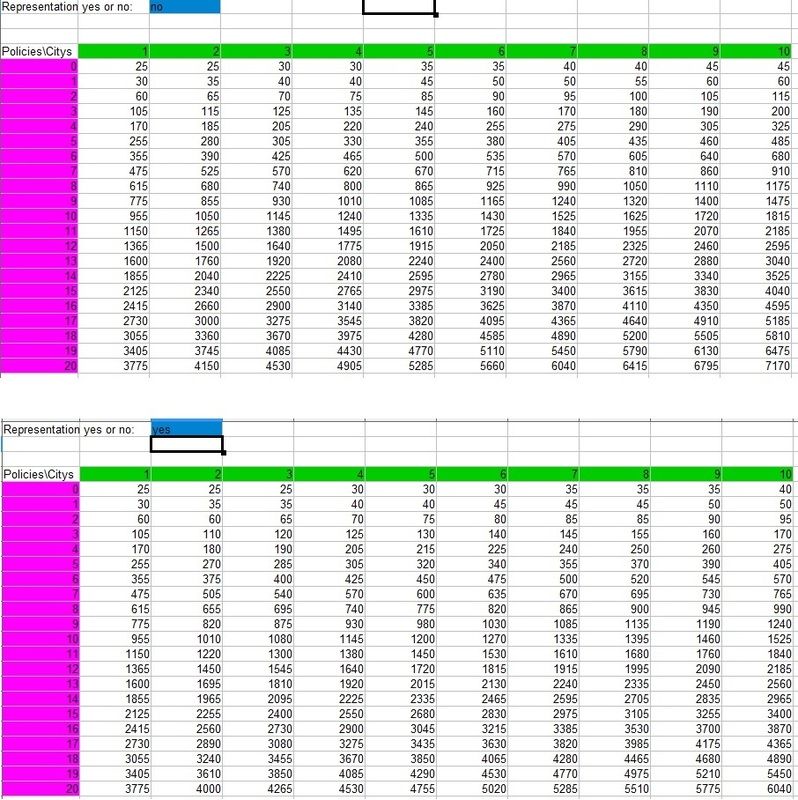WackenOpenAir
Deity
The formula in the wiki seems very outdated.
Does anyone know the new one ?
Does anyone know the new one ?
(ROUNDDOWN( (100-33)/100, 1))

Was Delnar off by that much?Basically, you'll always need to wait for Information Era before getting your free policy's worth of saved up culture.
It is hard to work with a screen shot of tables, but it looks to me that for an empire of X number of cities, about every 10th policy is a freebie over and beyond what you get with Representation! That seems remarkably good!
From that other thread:
Was Delnar off by that much?

I checked through the code and the formula is pretty much like the one described by Browd,
For a standard map or smaller this is 15 without representation, and 10 with representation so exactly 33% reduction.
Browds formula is right. Apparently I was looking in the old XML where the value for NumCitiesPolicyCostMod is 15 for standard maps (10 and 7.5 for large and huge maps). After further investigating I see that the variable storing this value is initialized to 10, and for standard maps the formula works. However I tested it for huge maps and the culture costs are lower. I don't see where this is modified in the code, but after testing, i determined this value is 7 for large maps and 5 for huge maps.Im sorry, i didnt totally work out all your math, but you do you not agree that browds formula higher up indicates 40% reduction instead of 33% ?
Ill check it better some time when i feel like it.
I might also learn how to work with the scenario builder or whatever so that i can test stuff without having to click trough long games.
<PostDefines>
<Row Name="AI_HANDICAP">
<Key>HANDICAP_AI_DEFAULT</Key>
<Table>HandicapInfos</Table>
</Row>
</PostDefines><PostDefines>
<Row Name="AI_HANDICAP">
<Key>HANDICAP_CHIEFTAIN</Key>
<Table>HandicapInfos</Table>
</Row>
</PostDefines>